Big Seas, Big Trouble?
Scientists Rush to Understand the Perils of Ocean Acidification
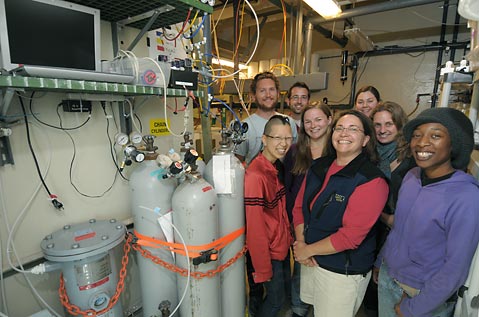
There is a new boogeyman haunting our future and the Mother Earth our children will inherit. Odorless and undetectable to the naked eye, this potential scourge has the oceans — and the various critters that live there — in its sights, with tidal waves of possible side-effects threatening to crash into ecosystems and disrupt the economy of coastal communities around the world. The beast is called ocean acidification, and it is as serious as a heart attack.
Feeling the fallout from our nearly three-century-long carbon-crazed energy binge, the oceans — which are the unsung heroes of the carbon-exchange dance that help make life possible on this planet — are having to absorb CO2 emissions raining down from the atmosphere far beyond the scope of what nature can handle. As UCSB professor and renowned ocean-acidification researcher Dr. Gretchen Hofmann said recently, “It is an interesting time to be a scientist. Basically, we are studying a developing disaster.”
But before you hopelessly throw your hands in the air or pull an ostrich under the weight of climate change’s evil twin, know that there is help on the way. Researchers the world over are scrambling to better understand the fast emerging phenomenon, and governments are hustling to facilitate funding (the U.S. Senate is holding talks on the subject this week). In fact, thanks to people like Hofmann and the young scientists working out of her UCSB-based laboratory, the various stakeholders of the Channel Islands National Marine Sanctuary Advisory Council (SAC), and the folks from the Environmental Defense Center (EDC), work being done right here in Santa Barbara is on the leading edge to both understanding and combating ocean acidification before it is too late.
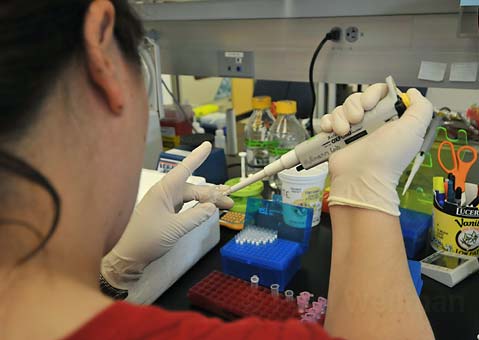
The Nature of the Beast
Ocean acidification is nothing new; it has occurred as long as the carbon cycle itself. The seas provide a vast and fundamental resting spot for naturally occurring carbon as it moves — via myriad chemical, physical, and biological processes — through Earth’s various “spheres,” including the stratosphere, the biosphere, and the hydrosphere. As CO₂ dissolves into the ocean, a balance of ionic and non-ionic chemical species such as carbonates, bicarbonates, and carbonic acid is dispersed. These buggers, which help dictate overall ocean acidity (i.e., pH levels) are crucially important to calcifying sea life such as urchins, lobster, and oyster larvae, as well as corals, because they allow them to form their outer crust. For us land-based folk, the ocean, by serving as a natural depository for atmospheric carbon, helps scrub clean — or at least store via the formation of stuff like limestone — the dirtiness of our carbon-emitting ways. In short, it is normal, it is natural, and we need it.
However, floating around the fringes of various science communities since the late 1970s has been the notion of accelerated ocean acidification as a bad and potentially very dangerous development. Last century, scientists realized that, thanks to industrialization, we have not only the aforementioned “organic” carbon cycle but also a manmade “inorganic” carbon cycle — the latter being the name for human-caused carbon emissions that also make their way through the world’s various spheres.
With this in mind, some serious-thinking people began to wonder what effect the “inorganic” cycle — one that has been growing exponentially and practically unchecked in terms of how much carbon is being sent into the atmosphere by our vehicles, factories, and deforestation — would have on the fragile chemistry of the ocean. It turns out the ocean winds up handling roughly 25 percent of all the manmade carbon emissions, and during the past few years, the evidence has been mounting as to what exactly this means. Cranking up the carbon input dial has thrown off the undersea balance such that certain areas of the ocean are seeing increasing corrosiveness (i.e., dropping pH levels).
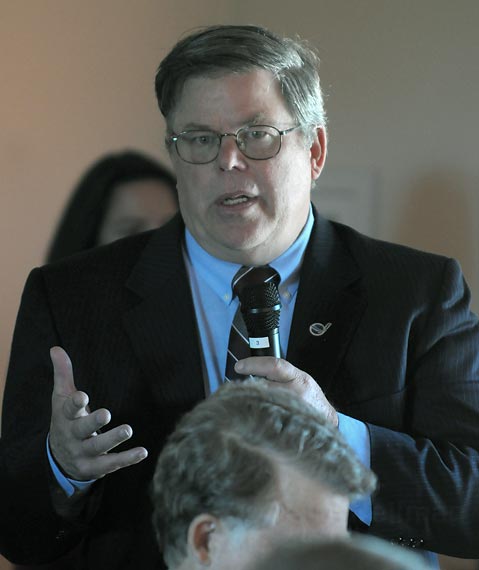
In fact, according to Dr. Richard Feely, a Nobel Prize-winning oceanographer and scientist for the National Oceanic and Atmosphere Administration (NOAA) who has been studying anthropogenic (manmade) carbon’s impact on the ocean since the early 1980s, “The present day pH levels for sea water is lower than it has been for over 20 million years. … There is little doubt [that] if it wasn’t for mankind’s input, the waters would not be so corrosive.” Based on the most recent data comparing current ocean water with ice core samples, sea water acidity has increased by some 30 percent since the Industrial Revolution, or, on the pH scale, has dropped roughly one tenth of a percentage point.
So what is the big deal if the pH drops a little bit? For starters, according to Feely and an increasing cadre of marine biology researchers, more acidic ocean conditions prevent calcifying ocean critters like oysters, mussels, crabs, and sea urchins from forming their shells; smaller marine invertebrates struggle to make it past the larval stages of their lives, and certain corals stop forming altogether.
In the fragile web of an ecosystem, these breakdowns in recruitment and life cycles — akin to massive cracks in the foundation of a house — are felt throughout the entire food chain, with potentially disastrous results. “If you look at the geologic record, what you find is that most of the major extinction events in our planet’s history have been linked to ocean acidification,” said Feely.
Even more troubling is the time frame of how the carbon cycle works. Basically, it takes about 50 years for deep water to make its way to the surface, so the data we are seeing today is indicative of carbon emissions from half a century ago. That is to say, at least from a carbon-level standpoint, we have decades to go before we will know the true impact of the past 50 years of global carbon emissions. It’s akin to realizing that a lifetime of tri-tip consumption and having vegetables with your salt every meal actually has a real-world impact on your arteries and cholesterol levels. Scientists and fishermen around the globe are waking up to the simple chemistry realities of frontloading our planet’s carbon cycle at a fast and furious pace since the dawn of the Industrial Revolution.
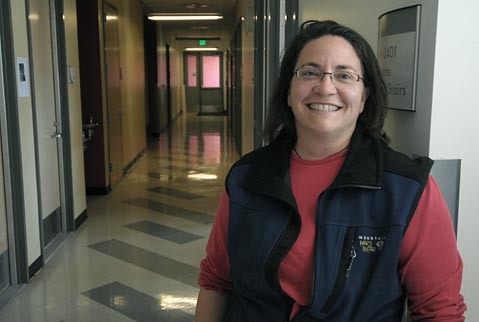
Enter Science
In the fall of 2006, Dr. Hofmann was in Antarctica doing research as part of her ongoing work with marine invertebrates, studying their physiology and how their environment impacts it, when she came across an article in Science magazine about ocean acidification. “I realized pretty quickly it had a lot of implications for the research I was already doing,” said Hofmann. That same year, after attending a conference on the subject at the Scripps Institution in San Diego, the UCSB-based researcher set up her first ocean acidification-specific lab. Using the findings of Feely and several international research efforts, Hofmann set out to investigate what exactly would happen to certain developing marine invertebrates under varying pH situations. “The idea was to take a calcifying invertebrate like a sea urchin, set up labs with different concentrations of CO₂, and ask them, ‘Can you hack it? Can you still make your shell?’” Hofmann explained.
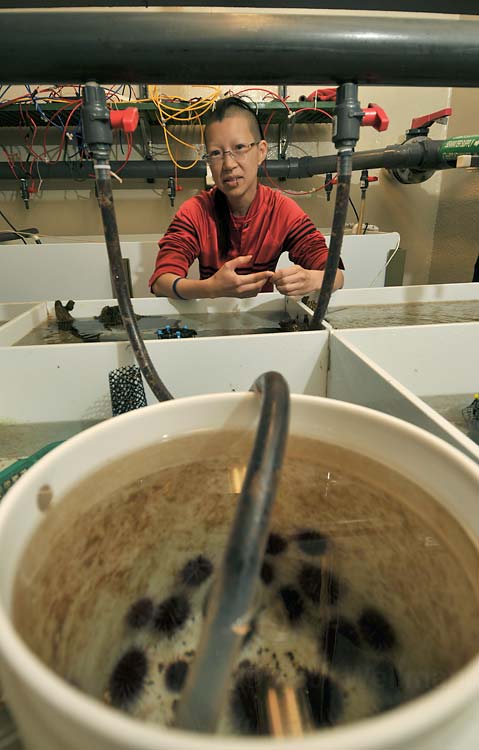
Hofmann basically had to invent the CO₂ lab system currently in place at UCSB from scratch; after a few false starts and on-the-fly tweaking, she figured it out, and the data started rolling in. Piping in sea water from nearby Campus Point and mixing it with various amounts of CO₂, Hofmann, her fellow researchers, and various undergrads can create ocean environments of the future.
Already, Hofmann’s lab, which has transported their CO₂ system around the world to study different organisms in different stretches of the ocean, has turned out three official papers on the subject, with more on the way. “While there are certainly more questions than answers at this point, what we are seeing in the lab is pretty clear,” said Hofmann. “When we run tests at 500 ppm [parts per million], things are okay; but when we start to get up toward 1,000 ppm of CO₂, then they start to show some pretty major signs of stress.”
The ocean is generally considered to have an average current ppm ratio of about 390 (versus pre-Industrial Revolution 280 ppm) with forecasts putting that number at higher than 500 by 2050 and toward 1,000 ppm by 2100. It is also important to remember that the ppm numbers are averages and that far higher concentrations exist at various points in the ocean — usually deeper, darker depths — and that certain events, such as wind-driven upwellings and hurricanes, can deliver more acidic water to shallower waters. In fact, according to informal readings from the Hofmann Lab, the average ppm for the water found just off of Goleta Pier is about 400, whereas, after a solid northwest wind blows for a few days, as it often does in spring, that number jumps to anywhere from 600 to 700 ppm.
The data coming out of Hofmann’s lab is certainly reason to raise an eyebrow of concern but is by no means a reason for full-on freak-out mode. After all, it looks like we have many years before the ocean will reach carbon levels so high that there are major impacts on life. Unfortunately, developing real-world scenarios may shake that sense of security.
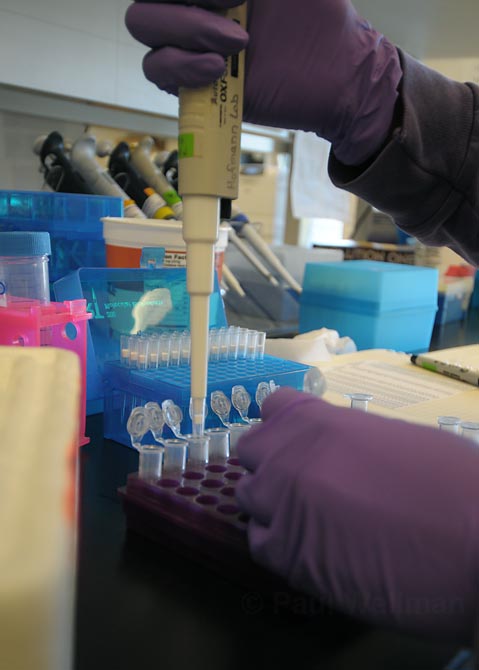
Around the same time that Hofmann was ramping up her research, Dr. Feely took part in a research cruise sponsored by NOAA. Sailing from Canada to Baja, Mexico, in 2007, Feely and his fellow scientists were looking for evidence of corrosive waters, previously found only in deeper sections of the ocean, on the continental shelf — the place where most sea creatures reproduce and develop. “What we found was that not only was [more corrosive water] there, but it was virtually everywhere we looked,” said Feely. Even more troubling, because manmade CO₂ has certain markers that make it distinct from “organic” CO₂, it was evident that these sections of more-acidic water were the result of our energy consumption habits.
Also around this time, with proven science finding hard evidence of corrosive water in near-shore areas, anecdotal evidence from fishermen throughout the Pacific Northwest started arriving. In short, recruitment was down in numerous shellfish fisheries; in the wild, recruitment for species like oysters was all but nil. You would hear the occasional odd story about someone finding oysters with divots in their shell or, even worse, smaller oysters with soft, paper-thin shells. “It was then that we really started to think about the link between the acidified waters and the experience that fisheries were having. It started to ring a few alarms,” said Feely, before adding, “but there wasn’t much strong evidence.”
That changed early last year after news trickled out about a major population crash at Whiskey Creek Shellfish Hatchery along the coast of Oregon. One of the largest suppliers of oyster larvae in the country, Whiskey Creek, which uses piped-in Pacific Ocean water, saw a major die-off of larvae, reducing its production levels by roughly 80 percent. With equipment set up to record upwelling events and corresponding pH levels, the folks from Whiskey Creek found a direct correlation between upwelling, decreased pH readings, and subsequent die-offs of oyster larvae. “It is complicated, but it is looking more and more like pH is a big part of the problem up there. … Things are quickly becoming not anecdotal,” said Hofmann.
Based on instrument readings at Whiskey Creek, the ocean water coming into the system during upwelling has carbon ppm readings of 1,400 to 1,600 — well above the 1,000 ppm threshold for “stress” that Hofmann has found in her UCSB lab and that most forecasters have been saying is still decades, if not a century, away. Though Hofmann, Feely, and others in the field are quick to temper the narrative coming out of Whiskey Creek with a “more research is needed” disclaimer, Feely himself admitted last week, “It’s true that what we have been seeing in laboratory settings has been starting to occur in nature, and much quicker than anticipated. And that certainly gives me much cause for concern.”
Now What?
Even with the latest developments, the who, what, where, when, and why of ocean acidification and its potential impacts remain largely unknown. According to Hofmann, there are essentially four ways that living organisms can respond to environments in radical flux: They can migrate, stay and deal with it as best they can with their existing genetic makeup, undergo true adaptation and actually change their genes, or become extinct. “In things like this, knowledge really is power,” said Hofmann.
For her, the next step is identifying the “first responders” in the crisis — that is, the species that are impacted by corrosive waters before others in their food chain — and get a better handle on what exactly they are experiencing. From there, the hope is that a threshold can be identified for when a population crash becomes likely, therefore enabling fishery management strategies to be taken.

Explaining that ocean acidification trends are “natural to a certain degree,” Hofmann stressed that adaptation is still a strong possibility. “Each organism is going to respond to this differently. It is not necessarily the case that everything is just going to eat it. We need to figure out which contemporary organisms have the ability to sustain these changes. But we don’t really know if we have enough time [for adaptation],” she continued. “The fear is that we are going to pop organisms right past their thresholds practically overnight,” like what they saw at Whiskey Creek. According to Hofmann, the real role of science right now is to simply find ways to “buy us time.”
Luckily, the Hofmann Lab isn’t alone in its investigation. Currently, NOAA is sponsoring yet another ocean acidification research trip, this time focusing primarily on corals in the South Pacific. Full-time labs dedicated to the topic are also in place around the world, including at the Scripps Institution in San Diego, Dr. Feely’s Pacific Marine Environmental Laboratory in Seattle, Washington, and Woods Hole Oceanographic Institution in Massachusetts.
“Certainly, when we started this thing, and even just a few years ago, there was essentially no funding money for ocean acidification research whatsoever,” Said Feely. “Now, Congress is getting behind it and money is becoming available. … The awareness is definitely growing.” An interagency working group made up of, among others, NOAA, NASA, U.S. Fish and Wildlife, and the National Science Foundation, is officially charged with developing a report on the issue and delivering it to Congress by next year, complete with a detailed plan for action. Additionally, President Obama, in signing the Omnibus Public Land Management Act last March, actually freed up $12 million for ocean acidification research immediately with designs on increasing that amount to $35 million per year by 2012.
An Inconvenient Truth
There is, however, still the elephant in room — carbon emissions. No matter how much work is done to understand ocean acidification, things are not likely to improve unless we curb our global enthusiasm for fossil fuels. Even if we could stop our carbon-loading ways overnight, we would be looking at a worsening situation for at least the next half-century as the rest of the anthropogenic carbon already in the atmosphere works its way through nature’s cycle.
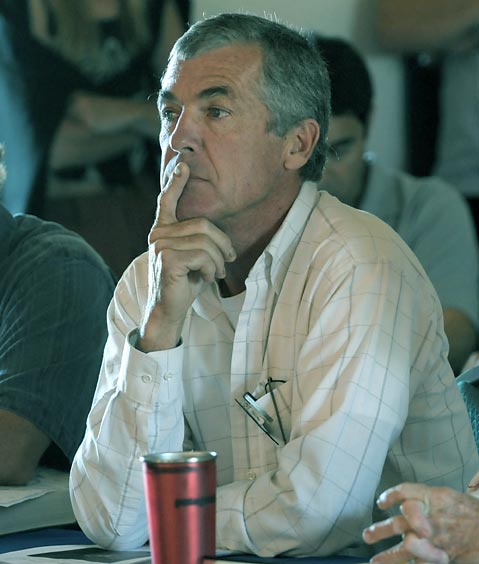
Enter Bruce Steele. A commercial sea urchin diver, organic farmer, and amateur scientist, Steele has been a virtual one-man army in the war to raise awareness on ocean acidification since it first blipped on his radar screen in 2004. He’s been testifying at hearings and writing letters and also appeared in the documentary Acid Test. Much like Hofmann, Steele, who lives in the Santa Ynez Valley with his wife, Diane Pleschner-Steele, first found out about the situation while doing some reading online. “I have a clipping service on the computer that sends me basically anything related to fishing,” Steele said. “It was about six years ago or so when I saw a story on the larvae development of sea urchins in Japan and how this thing ocean acidification might be causing trouble.” Steele started reading anything and everything he could on the topic, including Feely’s findings and the Royal Society’s seminal paper on the topic in 2005, which concluded unequivocally that anthropogenic carbon was altering the acidity levels of the ocean.
After getting his head around the degree of pH changes already being detected, Steele realized the potential for grave consequences, especially given the strong upwelling events that occur every year in the Santa Barbara Channel. “Basically, most humans don’t think about the ocean; they are terrestrial,” Steele said. “But when I hear [there has been a 25- to 30-percent drop in ocean pH levels since the start of the Industrial Revolution], alarms start ringing all over the place. Just think: If temperatures changed on land by that much, how many people would be jumping all over the place? Once I started to understand this thing, it truly changed the way I live my life.”
Already a member of the Channel Islands National Marine SAC, Steele played the role of Chicken Little on the multi-agency stakeholder board as they started updating their management plan in 2006, advocating awareness about the coming storm of ocean acidification. His concerns were echoed by fellow councilmember and senior Environmental Defense Center lawyer Linda Krop, and as the process developed, the realities of ocean acidification and potential impacts in sanctuary waters started to take center stage. The potentially perilous situation is made exponentially worse when you consider the prominence of shellfish fisheries in area waters.
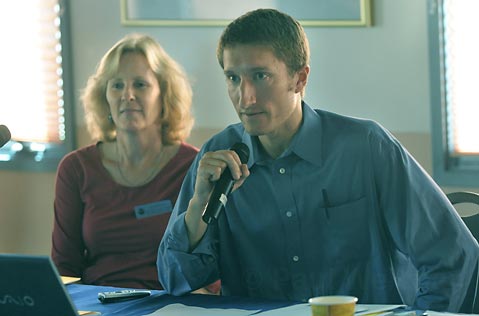
Because of this discussion, the council’s Conservation Working Group, with a great deal of help from then EDC employee Shiva Polefka, compiled an official report on the topic and strategized possible responses to the situation. Ratified in the fall of 2008, the nearly 50-page report — one of the first of its kind by an official agency in the United States — has gone on to be adopted by every one of the 14 marine sanctuaries in the country and was the impetus for the recently formed West Coast Ocean Acidification Task Force. Although the task force just met for the first time in mid April, according to Channel Islands National Marine Sanctuary Superintendent Chris Mobley, forces are already mobilizing. “We are not just waiting around for some larger, grand scheme on what to do,” said Mobley. “As the science has developed, we are getting more and more warning signs; it certainly seems that tipping points, or thresholds, are coming quicker. We need to plan rapidly here on the West Coast … and raising public awareness is a major part of that.”
There are the same sort of purportedly science-supported attacks that plague the climate change discussion; raising public awareness is perhaps the biggest stumbling block facing the ocean acidification phenomena and a more carbon-conscious future. Those close to the issue chafe easily at the belief that dropping pH levels in the ocean are nothing more than a natural turn in the cycles of our planet — Feely bristled openly at the suggestion, saying, “Unlike climate change, our cause and effects are clear and very, very real. It is basic chemistry. If you know what you are talking about, it is not something you can argue with.” The fact remains that, at least here in the United States, skepticism is par for the course when talking about such things, and Steele knows it. “There is going to be denial on this subject right up to the bitter end. All you can do is change yourself and your habits and offer up examples of what we can do and hope that eventually society can restructure itself.”



